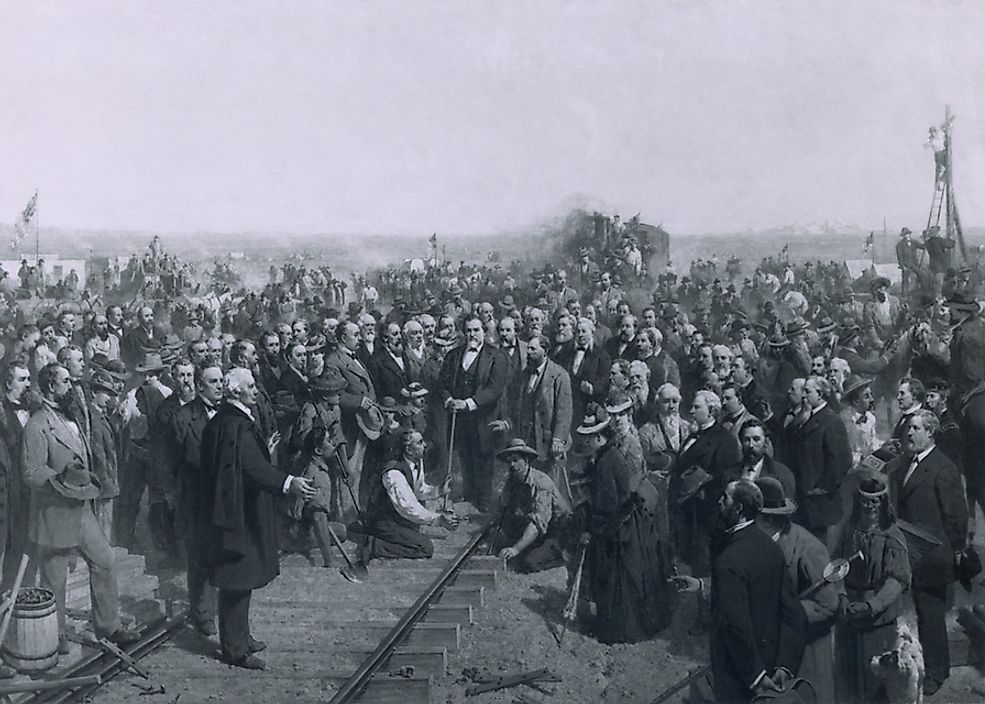Why Was the Transcontinental Railroad Built?

Construction of the first ever transcontinental railroad began in the United States in 1863 and was completed in May 1869. The idea of building the transcontinental railroad was presented to Congress by Asa Whitney in 1845. Upon completion, the railroad became one of Abraham Lincoln’s infrastructure development legacies, who had supported the building of the railroad, although it was not completed four years after his death. The railroad was built by several companies including the Western Pacific Railway Company, the Central Pacific Railway Company of California, and the Union Pacific Railroad Company.
Areas Served by the Transcontinental Railroad
The railroad was built between 1863 and 1869 as a means of connecting the east and west coasts of the United States of America. It passed through several towns and cities including Sacramento, Omaha and then through Nebraska. The transcontinental railroad was built to open up the interior and allow settlement in these areas, to make rural and unexplored areas accessible, and to ease the transportation of both goods and passengers from one area to another. It was also built to boost business activities, economic growth, and the industrial activities in these areas.
Benefits of the Transcontinental Railroad
The railroad boosted the economic status of the United States in several ways. The transportation of raw materials and manufactured goods to and from industries became faster and easier after the completion of the railroad, and the ability of the railroad to connect the two coastlines boosted business activities on the coasts. The railroad helped to the open unexplored interior regions in the country, leading to new settlement areas which would otherwise have not developed. The railroad enhanced faster and cheaper transportation of goods and passengers from the coastal areas to the interior of the US, replacing the dangerous and slow wagon trains, pony express, and stagecoaches. During the building process, there was also significant cultural exchange with immigrant laborers from countries such as China, Ireland, and Germany.
Construction Challenges
During the construction process, a few challenges were experienced that slowed down the completion of the railroad. The building occurred during the American Civil War, which explains why it took longer for the railroad to pass through Sierra. Furthermore, construction in the Sierra involved dealing with rugged terrain and a challenging mountainous landscape. Supplying building materials from Cape Horn to California took a very long time because they had to be transported by ship. Shortages of labor, food, and housing was another setback that slowed the construction process. Weather conditions, such as freezing and sandstorms, also affected laborers and the building process.
Negative Effects of the Railroad
The building of the transcontinental railroad negatively impacted various groups of people. Some Native American tribes were forced to vacate their land in order to pave way for the transcontinental railroad. Diseases were widespread because of the interactions during the railroad building, and the building process itself was dangerous to the health of laborers. A large number of buffalo were killed during the building process as a result of sporting activities.







